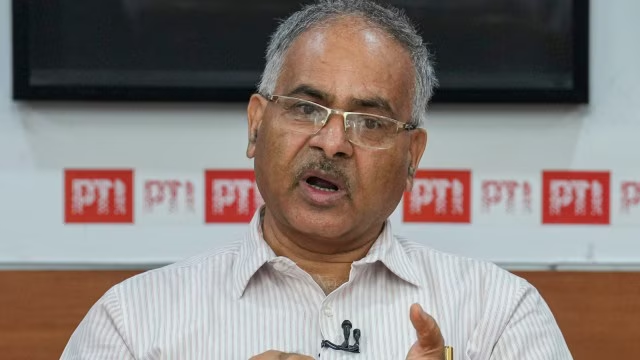Three months after the NCERT revised its Class 12 political science textbook by removing references to the Babri Masjid demolition and emphasizing the Ram Janmabhoomi Temple movement, NCERT Director Dinesh Saklani explained that the changes were made by experts to avoid creating “violent, depressed” citizens. Saklani emphasized that he was not directly involved in the revisions, which were carried out according to global practices of updating old text. He noted that the removal of Babri Masjid references aligned with the Supreme Court verdict. The revised textbook now refers to the Babri Masjid as a ‘three-domed structure.’ “The experts decided on the appropriate terminology,” Saklani stated.

Defending the revisions, Saklani stated that the NCERT textbook is a “small book,” and those interested in exploring the topic further can “read about it from elsewhere.” He emphasized that “we cannot stop people who are curious from reading and researching.”
In the chapter titled ‘Recent Developments in Indian Politics,’ the previous version on page 136 included the question: “What is the legacy of the Ram Janambhoomi movement and the Ayodhya demolition for the nature of political mobilisation?” The revised textbooks now ask: “What is the legacy of the Ram Janmabhoomi movement?”
According to the NCERT, this change was made “to align the initial questions with the latest internal revisions in the chapter.”
Regarding the removal of references to the Babri Masjid demolition, the revised chapter on page 139 previously stated: “Fourth, a number of events culminated in the demolition of the disputed structure at Ayodhya (known as Babri Masjid) in December 1992. This event symbolized and triggered various changes in the politics of the country and intensified debates about the nature of Indian nationalism and secularism. These developments are associated with the rise of the BJP and the politics of ‘Hindutva’.”
In the updated version, the NCERT notes, it now reads: “Fourth, the centuries-old legal and political dispute over the Ram Janmabhoomi Temple in Ayodhya started influencing the politics of India, which gave birth to various political changes. The Ram Janmabhoomi Temple Movement, becoming the central issue, transformed the direction of the discourse on secularism and democracy. These changes culminated in the construction of the Ram Temple at Ayodhya following the decision of the Constitutional Bench of the Supreme Court (announced on November 9, 2019).”
NCERT explained that the revisions were made to reflect the Supreme Court’s Constitutional Bench verdict and its broad acceptance, stating: “The text on the Ayodhya issue has been thoroughly revised because of the latest changes brought by the Supreme Court’s Constitutional Bench verdict and its widespread welcoming reception.”
In another notable revision, the NCERT has altered the content on page 112 of the Class 11 political science textbook titled ‘Political Theory,’ specifically in Chapter 8 — Secularism. The original text stated, “More than 1,000 persons, mostly Muslims, were massacred during the post Godhra riots in Gujarat in 2002.”
The updated version has been changed to, “More than 1,000 persons were killed during the post Godhra riots in Gujarat in 2002.”
(This story was taken from a syndicated feed, and edited only for style by The Maadhyam’s Digital staff)